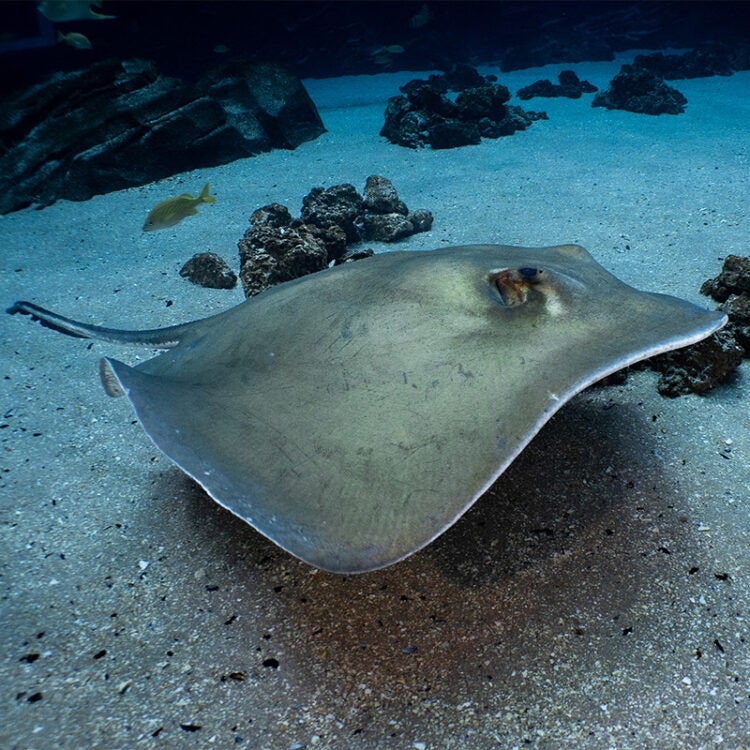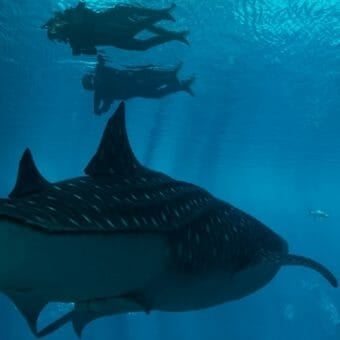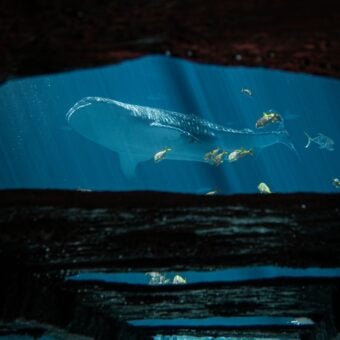-
Size
6.5 feet (2 m) -
Diet
Bony bottom-dwelling fishes, crabs, worms, clams, and shrimp -
Range
Western Atlantic -
Habitat
Sand, in seagrass meadows, lagoons and reefs
Physical Characteristics
- The maximum recorded width is 6.5 feet (2 m). The maximum published weight is 214 lbs (97 kg).
- The southern stingray can be distinguished from other rays by the irregular row of short spines on the upper surface along the center of its back.
- The disc of the southern stingray is more diamond-shaped and angular than the discs of other benthic rays.
- Little is known about its average lifespan and growth rate.
- The upper surface of the southern stingray ranges in color from solid gray to brown to olive green with no markings. The ventral side is white or whitish with a gray or brown edging.
Animal Fact
The venom in a stingray's barb is heat sensitive and breaks down at higher temperatures.
Diet / Feeding
- Feeds primarily on bony bottom-dwelling fishes (such as scorpionfishes, toadfishes, and surgeonfishes), crabs, worms, clams, and shrimp.
- Their flat teeth are used to crush shellfish. They spit out the shell fragments and ingest the soft body parts of the prey.
- This ray flaps its pectoral fins near the bottom to uncover prey. Other animals often will follow the rays to pick off any animals that escape their mouths.
- Feeds by slowly grazing along the ocean floor, using its electro-receptors and its powerful sense of smell and touch to locate prey buried in the sediment.
Range / Habitat
- Occurs in the Western Atlantic from New Jersey to Brazil.
- It is abundant near Florida and in the Bahamas.
- This stingray is most commonly found on sand, in seagrass meadows, lagoons and reefs. It also frequents bays and estuaries.
- As a bottom dweller, the southern stingray avoids large reef structures where it would be difficult to feed.
- This stingray is usually found in intertidal pools to depths of 170 feet (52 m).
Reproduction & Growth
- Ovoviviparous- the eggs hatch within the mother’s body and she gives birth to fully formed young.
- Gestation is 4 to 11 months and litter sizes range from 2 to 10 pups, with an average of four pups per litter.
Conservation Status
- “Near Threatened” on the IUCN Red List.
Additional Information
- Formerly Dasyatis americana.
- It has many names including: “kit,” “stingaree,” “stingray,” and “whip stingray.”
- The southern stingray often stays buried in the sand during the day and emerges at night to hunt.
- Stingrays will intentionally frequent “cleaning stations” where their external parasites are removed by cleaners such as the bluehead wrasse and Spanish hogfish.
- The southern stingray lives alone or with a mate, and is occasionally found in groups.
- The barb on this ray is for defense and contains venom that produces intense pain and sometimes paralysis in humans.
- The southern stingray is a non-aggressive animal, posing little threat to humans. However, if stepped on, the ray will use its spine in defense.
- Ovoviviparous- the eggs hatch within the mother’s body and she gives birth to fully formed young. Gestation is 4-11 months and litter sizes range from 2-10 pups, with an average of four pups per litter.
- The venom in a stingray’s barb is heat sensitive and breaks down at higher temperatures.
- This ray has few natural predators other than large sharks, such as hammerheads. The species is not targeted by commercial fisheries but is common in by-catch of trawl nets.
- Indigenous people have been known to use stingray spines to make spears, knives and other tools.





